The decade saw an improvement in video and television quality that allowed us to see everything clearly and led to some historical moments that you can visualize in your mind with just the slight mention of a name: Joe Carter, Cal Ripken, Mark McGwire, Sammy Sosa, Jim Abbott, Albert Belle. These names have definite moments associated with them and we saw all of them more clearly than ever.
The 1990's started with one of the biggest upsets in history as the Reds dethroned the dynasty in Oakland in a 4 game sweep. The following year provided the greatest World Series in history as two underdogs faced off (both teams had been in last place the year before) in a classic 7 game battle that ended in a 1-0 extra inning. (See previous article: Greatest World Series Moments: The Greatest Game Ever part 2). The great moments continued the next two years as the World Series title flew north to Canada and left the borders of the US for the first time in history. The second World Series title in Toronto was won on an iconic home run by Joe Carter (sorry Phillies fans).
That was where the fun ended. 1994 started off as a season for the ages. Jeff Bagwell, Matt Williams, Ken Griffey, Jr, Fred McGriff and Frank Thomas were chasing Roger Maris and Tony Gwynn was trying to become the first .400 hitter since Ted Williams in 1941. The Expos were dominating the National League while the White Sox were threatening to dominate the American League. The Yankees were set to make the playoffs for the first time since 1981 and Cal Ripken was moving steadily towards breaking an unbreakable record. The great season never came to a conclusion. The owners locked the players out shortly after the All Star Break as the collective bargaining agreement ended. Wars, assassinations and natural disasters could never cancel a World Series before but the greed of owners and players did.
After a delay to the start of the 1995 season, including serious considerations on whether or not to use replacement players, the game came back. With the return of the game came interleague play, 6 divisions (3 in each league) as opposed to the 4 that had been in place since the 1960's and an extra round of playoffs. Instead of 2 division leaders in each league reaching the playoffs, there would now be three division winners and a wild card.
The second half of the decade was dominated by the Braves, Yankees, and Indians. Starting in 1991 one of these three teams (and several times both) would be involved in every World Series through the end of the decade.
There was also plenty of growth and movement in the league. At the start of the decade the National League had two divisions of 6 teams each. In 1993 the Colorado Rockies and Florida Marlins joined the NL and made two seven team divisions. When the three division play began in 1995 Detroit was in the AL East and Milwaukee was in the AL Central. When Tampa Bay joined the AL East and Arizona joined the NL West in 1998, Milwaukee moved to the NL Central and Detroit moved to the AL Central. The movement is almost enough to make your head hurt trying to figure it all out.
The 1990's had some great trades that benefited organizations for years to come. The Red Sox traded for Pedro Martinez from Montreal. The Yankees traded for Paul O'Neill from the Reds and the Cardinals traded for Mark McGwire from the A's. On the other hand one trade came to be viewed as the worst trade in the history of the game. Just after the new year in 1991 the Baltimore Orioles traded three young players, Steve Finley, Pete Harnisch and Curt Schilling to the Houston Astros. Finley played for another 12 years, made the all star team several times and helped the Padres, Diamondbacks, Dodgers and Angels reach the playoffs and helped resurrect a Houston franchise that was a mess. Harnisch made several all star teams and helped the Reds reach the NLCS in 1995. Schilling went on to a Hall of Fame career with the Astros, Phillies, Diamondbacks and Red Sox. In return the Orioles received firstbaseman Glenn Davis. Trouble was they already had three firstbaseman on the roster that the fans loved, Randy Milligan, Sam Horn and David Segui. Davis played only 49 games that first year because of back problems, never completely recovered and never made any major contributions to the team.
The end of the decade saw complaints that the batters had too many advantages and the pitcher's were losing the right to pitch inside leading to higher home run totals. The start of the decade was different. 1990 saw seven no-hitters, including one by Nolan Ryan and 1991 saw another seven, with yet another by Nolan Ryan. The conversation at that point was how to stop pitchers from dominating the game.
The decade had two moments that will forever be remembered. One for the negative connection that would come about just a few years later. The other for the demonstration it made that some players still did respect the game and played for the fans.
1998 was the year of the home run. 9 players hit 45 or more home runs. As the season started it looked like Roger Maris's record would be chased by McGwire and Griffey. Suddenly in late July a new, relatively unknown, contender showed up. Sammy Sosa, who had not hit more than 40 home runs in a season, hit 66 in 1998. Between the years 1990-1993 he hit a combined total of 66. McGwire, on the other hand, started bashing home runs as a rookie. In 1987 he hit 49 home runs, a rookie record, and he had chased Maris's 61 home runs in the previous two seasons. In 1998 McGwire hit 70. As the Yankees and Braves dominated the standings fans fell in love with the two stars. Several years later they were both identified as steroid users (and Sosa also got caught with a corked bat).
The greatest moment of the decade came when Cal Ripken, Jr broke Lou Gehrig's record for consecutive games played. Ripken had not only played continuously, he revolutionized the shortstop position. When Ripken entered the league he was a thirdbaseman. A shortstop was traditionally seen as a small, quick, nimble player who had to move smoothly around the bag so he could avoid the runners barreling into secondbase to break up a double play. Ozzie Smith was the prototype. Earl Weaver decided to experiment and move the tall, thick, slower Ripken to shortstop in 1982. As a shortstop Ripken won a rookie of the year award, 2 MVP's (he received MVP votes in 9 other seasons, including coming in 3rd in 1989) and made 19 consecutive All Star Games. If not for this move Jeter, Nomar and ARod would never have been given a look at shortstop. They would have been dismissed as too big to play there. As the league tried to recover from the strike disaster Ripken was forced onto a national stage and did what Orioles fans had seen him do for years. He came to the park early and signed autographs, he gave interviews after the game, he signed more autographs and gave more interviews. The night that he tied the record he was giving interviews and signing autographs until 2 am. He got up the next morning to take his son Ryan to his first day of school. He then went to the ballpark early, signed autographs, gave more interviews and played the game. In the record breaking game he hit a home run and was forced by his teammates to take a celebratory lap around the field. In typical Ripken style he shook hands with as many fans as he could. The pressure on Cal to be the savior of the game was tremendous. He didn't have to do anything different. He just acted like a Ripken: he did everything with class.
Although the names of Ken Griffey Jr, Rickey Henderson, Jose Canseco, Frank Thomas, Joe Carter, Roberto Alomar, Wade Boggs, Roger Clemens, Tony Gwynn, Cal Ripken and Nolan Ryan will be the names that are remembered thirty, forty, fifty years from now (or more), every decade has tremendously talented, successful players who make wonderful contributions to the success of their teams, organizations and the league as a whole. Unfortunately many of the players who fall into this category will be forgotten, overlooked and generally ignored. Here are 13 players* from the decade you may not remember but you definitely should:
Catcher:
Sandy Alomar, Jr.
Career Teams: San Diego Padres (1988-1989), Cleveland Indians (1990-2000), Chicago White Sox (2001-2002), Colorado Rockies (2002), Chicago White Sox (2003-2004), Texas Rangers (2005), Los Angeles Dodgers (2006), Chicago White Sox (2006) and New York Mets (2007)
All Star Appearances: 1990, 1991, 1992, 1996, 1997 and 1998
MVP Voting: 1997 (14th)
The San Diego Padres made some big trades during the late 1980's and early 1990's. Most of them ended up working out better for the other team. Sandy Alomar, Jr was the perfect example. The Padres traded Alomar, Chris James and Carlos Baerga to the Indians in exchange for Joe Carter. It was a nice trade for the Padres, who turned around a few years later and shipped Carter and Roberto Alomar (Sandy's brother) to the Blue Jays. Cleveland was a baseball graveyard at the time and Carter was one of their few bright spots. In a seeming gift to San Diego, Cleveland used this trade to begin turning their fortunes around. Alomar won the Rookie of the Year in 1990 and made the all star team in 1990, 1991 and 1992. The position of catcher during the decade was dominated by Pudge Fisk at the beginning and by Pudge Rodriguez in the middle and end of the decade. Alomar was consistently under rated as a hitter, as a fielder and most importantly as manager of the pitching staff. The Indians went from a team fighting to stay out of last place every year to a team fighting to win the World Series and Alomar was a key in that group. The Indians came to within a few innings of winning the World Series in 1997. During the three rounds of that postseason, Alomar hit 5 HR, including two in the World Series, and drove in 19.
First Base:
Hal Morris
Career Teams: New York Yankees (1988-1989), Cincinnati Reds (1990-1997), Kansas City Royals (1998), Cincinnati Reds (1999-2000) and Detroit Tigers (2000)
All Star Appearances: None
MVP Voting: 1994 (15th)
Playing firstbase in the Yankees minor league organization in the 1980's was not fun. Unless you were traded there was no chance to play when you had to compete with Don Mattingly every year. Luckily for Hal Morris, the Reds were interested in a good firstbaseman. In 1990 he finished second in Rookie of the Year voting behind David Justice and Delino DeShields. He wasn't the award winner but he had a great rookie season hitting .340. The Reds had a great year as a team upsetting the heavily favored Oakland A's. Morris hit poorly in the World Series but had a great deal to do with them beating the Pirates in the NLCS as he hit .417. Morris was having his best season ever in 1994 when the strike wiped everything out. The Reds made the playoffs again in 1995 and in the first ever Divisional Playoff series Morris hit .500. First base in the National League at that time was dominated by Will Clark and Mark Grace so Morris was never truly recognized nationally for the strong contributions he made.
Second Base:
Mariano Duncan
Career Teams: Los Angeles Dodgers (1985-1987 and 1989), Cincinnati Reds (1989-1991), Philadelphia Phillies (1992-1995), Cincinnati Reds (1995), New York Yankees (1996-1997) and Toronto Blue Jays (1997).
All Star Appearances: 1994
MVP Voting: 1985 (23rd)
Mariano Duncan played in the major leagues for 12 years and played for five teams. With the exception of Toronto in 1997 (he only played 32 games there) his teams made the playoffs at least once in every stop of his career. As a rookie in 1985 he was a big reason the Dodgers were able to fight the Cardinals in one of the classic playoff series of all time. He hit only .222 with 4 hits in the series but two of those were doubles and one a triple. He also came in third in Rookie of the Year voting behind Vince Coleman and Tom Browning. Duncan remained with the Dodgers, though he was not part of the 1988 World Series Championship team, and was traded to the Reds at the trade deadline of 1989, just a month before the Pete Rose decision was announced. Duncan made a big impact on the 1990 team, hitting .304, leading the league with 11 triples and adding a great defensive leadership. His steady glove and the powerful bat of Eric Davis led the Reds to a World Championship. At the end of the 1991 season he became a free agent and moved on to the Phillies for the 1992 season. The Phils had big expectations that season but the season deteriorated quickly on opening day when Lenny Dykstra broke his wrist on opening day. Duncan hit only .268 that season but did knock 40 doubles and stole 23 bases. During the next magical season Duncan was a quiet, steady guiding force. Although Mickey Morandini was the everyday second baseman and Duncan split time at Shortstop with Juan Bell, Kim Batiste and Kevin Stocker, Duncan also played 65 of his 124 games at secondbase. Duncan had some big hits that postseason and some even bigger defensive plays. He hit .345 in the World Series and had 3 triples in the playoffs. His path took him back to the Reds for 1995 as Cincinnati advanced to the NLCS. Duncan again played a big role going 2-3 in the 2 games he appeared including a stolen base. The Reds fell short against the eventual World Series Champion Braves and Duncan moved on to the Yankees. New York had not had a true, solid everyday secondbaseman since Willie Randolph but Duncan stepped up. In 109 games Duncan hit a tremendous .340. In a lineup including Wade Boggs, Tim Raines, Darryl Strawberry, Bernie Williams, Paul O'Neil, Tino Martinez and a young Derek Jeter, Duncan was the forgotten man in New York but he was a steadying influence in the hectic Yankee clubhouse. He struggled in the World Series hitting only .053 but the Yankees would not have been there without him as he drove in three runs against Texas in the opening round. Duncan was replaced in 1997 by Luis Sojo and eventually was moved to Toronto for a minor leaguer. Duncan was not always recognized by the press but his influence in the clubhouse was unavoidable.
Chuck Knoblauch
Career Teams: Minnesota Twins (1991-1997), New York Yankees (1998-2001) and Kansas City Royals (2002)
All Star Appearances: 1992, 1994, 1996 and 1997.
MVP Voting: 1994 (20th), 1995 (17th) and 1996 (16th).
Knoblauch's reputation at the end of his career was not good. Yankee fans remember Knoblauch for the wrong reasons. In the 1998 playoffs against the Indians, Knoblauch covered first on a bunt by the Indians' Travis Fryman. As Knoblauch waited for the throw Fryman was nailed square in the back by the throw and the ball rolled down the first base line. Knoblauch immediately ran to the umpire and berated him because Fryman may or may not have been inside the base path. As Knoblauch ranted and the ball rolled free, Enrique Wilson stumbled around third and scored the eventual winning run and Fryman, who had attempted to sacrifice himself, stood on third. The image of Knoblauch growling at the ump is seared in the mind of Yankees fans and unfortunately it has marred what was a great coup for the Yankees at the time. Knoblauch won the Rookie of the Year award in 1991 as part of Twins team that won the greatest World Series of all time. (See previous article: Greatest World Series Moments: The Greatest Game Ever part 2). The Twins could not continue the winning ways and as they slipped farther in the standings, Knoblauch continued to improve. Although the Twins signed aging stars like Dave Winfield, Paul Molitor and Terry Steinbach, Knoblauch remained the bright spot on the team. To obtain Knoblauch before the start of the 1998 season the Yankees had to give up four players and cash, one of the players was a highly regarded pitcher named Eric Milton, who would go on to a decent career, including an all star appearance in 2001. In Knoblauch's first year in New York his average slipped to a career low of .265 but he scored 117 runs and hit a career high 17 HR as the 1998 Yankees became one of the greatest teams in history. Regardless, Knoblauch's gaffe against Cleveland became the identifying focal point of his career. It was his Bill Buckner moment. One dumb mistake that overshadowed a borderline hall of fame career to that point. Knoblauch kept plugging along and had a great World Series against the Padres, hitting .375 and a home run in the 4 game sweep. Always known as a great fielder to this point, Knoblauch started making some odd throwing errors on routine throws to first. It was a few erratic throws at first but they started to become more consistent. The odd part was he could dive to stop a ball, get up and rush a throw to firstbase with no problem. It was the routine, everyday, batting practice ground balls that caused the problems. He made 26 errors in 1999 (double his 13 from the year before) and 15 errors in 2000 in a part time role. He could never regain his throws and with Alfonso Soriano coming to the majors Knoblauch started his movement to Leftfield and DH. Knoblauch was released after the 2001 season and played a part time role for the Royals in 2002. The career that had been on track for the Hall of Fame had derailed.
Shortstop:
Tony Fernandez
All Star Teams: 1986, 1987, 1989, 1992 and 1999.
MVP Voting: 1986 (14th), 1987 (8th), 1988 (26th) and 1989 (19th)
The early years of the 1990's was one of the best generations of shortstops: Ripken, Vizquel, Ozzie Smith, Ozzie Guillen, Larkin. The second half of the decade was just as good with young shortstops: Jeter, Garciapara, A-Rod. The one name forgotten in both the first and second half of the decade is Tony Fernandez. Tony entered the league just as the league doormat in Toronto was starting to dust itself off. The Blue Jays made the playoffs in 1985 for the first time, almost made it in 1987 and made it again in 1989. Each time Fernandez had a strong playoff series but couldn't advance past the first round. The Blue Jays decided to rebuild the team after the 1990 team. George Bell went to Chicago while Tony Fernandez and Fred McGriff were shipped to the Padres for Roberto Alomar and Joe Carter in one of the greatest movements of talent ever. The trade led to two World Series titles for Toronto and disappointment for the Padres. Fernandez had two strong years in San Diego, including a 1992 all star appearance, but the team could get nowhere as the Braves, Dodgers, Giants and Reds battled for the top spots. After the 1992 season San Diego unloaded much of their high priced talent and sent Fernandez to the Mets in exchange for D.J. Dozier ( former two sport star who played Full Back for the Minnesota Vikings). Fernandez played only part of the year with the Mets because he was traded to Toronto. Although Paul Molitor got the MVP of the series and Joe Carter became a legend, Fernandez drove in 9 runs to help beat the Phillies. It would have been a great career to that point but it wasn't over yet. After a brief stop with the Yankees in 1995 ( he hit only .237 in the first ever wild card playoff series) and a year outside of baseball he moved on to Cleveland. Although there was no Comeback Player of the Year Award yet, Fernandez would have won it. Fernandez hit .286 with 21 doubles and 11 Home Runs. He had one more magic moment left in his bat. In the final game of the 1997 ALCS, the Orioles had mounted a late series push to make the World Series. With game 5 tied in the late innings Fernandez fouled a pitch off his foot. He limped around home plate a few times and told the trainer he was fine. He was right. He hammered the next pitch for a home run to pound in the final nails in the Orioles coffin. Fernandez made a final All Star appearance for Toronto in 1999. He was never listed with the greats of the era but Fernandez was constantly on winning teams.
Third Base:
Kelly Gruber
Career Teams: Toronto Blue Jays (1984-1992) and California Angels (1993)
All Star Appearances: 1989 and 1990
MVP Voting: 1990 (4th)
Kelly Gruber was an up and coming star as the 1980's ended. His first full year in Toronto was 1987. He had a decent season but it didn't compare with what was to come. The Blue Jays surged to prominence in two waves. The first wave (1985-1989) was led by Dave Stieb, George Bell, Fred McGriff, Tony Fernandez and Tom Henke. As these stars were shipped off, aged or dealt with injury the Blue Jays quickly rebuilt. The second wave came quickly after (1991-1993). They brought in Dave Winfield, Dave Stewart, Devon White, Jack Morris, Rickey Henderson, Joe Carter, Paul Molitor and Roberto Alomar. One of the few home grown stars to span both waves was Kelly Gruber. Gruber's best year was the season in between the two great waves. As the Blue Jays lost a battle with the Red Sox for first place that went down to the last three games of the year, Gruber was the leader of the Jays. He hit .274 and 31 HR, many of them down the stretch, as he carried the team. Gruber contributed greatly to the World Series Champion 1992 Jays, although he struggled in the playoffs. Following the 1992 series Gruber became a hotly sought after free agent, yet, oddly Toronto failed to make a big offer. Gruber signed a big contract with the Angels. Gruber showed serious signs of shoulder trouble and the Angels argued that they had bought damaged goods. Gruber played only 17 games for California before leaving the game for good. Had he stayed healthy Gruber could have been one of the great thirdbaseman of the decade.
Outfield:
Ellis Burks
Career Teams: Boston Red Sox (1987-1992), Chicago White Sox (1993), Colorado Rockies (1994-1998), San Francisco Giants (1998-2000), Cleveland Indians (2001-2003) and Boston Red Sox (2004).
All Star Appearances: 1990, 1996
MVP Voting: 1990 (13th), 1996 (3rd) and 2000 (15th)
The Boston Red Sox were in transition when Ellis Burks became a full time player. They were also recovering from the pain of losing the 1986 World Series. Dwight Evans and Jim Rice were aging and Dave Henderson would only be in the Boston outfield for half of the 1987 season. It didn't take long for the Red Sox to rebuild. They had a strong young crop of players such as Jody Reed, Mike Greenwell and Burks. Although the Red Sox struggled as a team in 1987 the young players gave hope for the future. Greenwell and Burks specifically helped carry the Bosox to division titles in 1988 and 1990. His numbers in those two playoff years were poor but that was more likely due to the strong Oakland pitching staff and less Burks' poor play. He moved on to the White Sox for the 1993 season and helped the White Sox reach the playoffs for the first time in 10 years. His team again ran into a new dynasty, the Blue Jays. Although they lost in 6 games, Burks hit .304 with a home run and 3 RBI and scored four times. His stay in Chicago was short. He moved on to the new Colorado Rockies organization. The first year there was the strike shortened 1994. When baseball returned so did Burks and he had never played better. The Rockies shocked everyone by securing a playoff spot and although much of the attention went to Dante Bichette, Vinny Castilla and Andres Galaraga, Burks was truly the driving force of the team. If 1995 was a good year, 1996 was his best. The rest of the team slumped but Burks hit .344, stole 32 bases, hit 42 home runs and scored a league leading 142 runs. Burks moved on to San Francisco for two years and then to Cleveland for three seasons. Every stop had a playoff appearance, unfortunately, every stop had a first round exit. Burks never did make the World Series. In February 2004 he went back to his roots and signed with the Red Sox. The 2004 Red Sox eventually won the World Series but in a crowded outfield with Manny Ramirez, Johnny Damon, Gabe Kapler and Trot Nixon and with David Ortiz set at DH Burks only saw action in 11 games and was left off the postseason roster. Burks played for 18 seasons, made major contributions to 5 different organizations and came up just short of winning a ring.
Kenny Lofton
Career Teams: Houston Astros (1991), Cleveland Indians (1992-1996), Atlanta Braves (1997), Cleveland Indians (1998-2001), Chicago White Sox (2002), San Francisco Giants (2002), Pittsburgh Pirates (2003), Chicago Cubs (2003), New York Yankees (2004), Philadelphia Phillies (2005), Los Angeles Dodgers (2006), Texas Rangers (2007) and Cleveland Indians (2007)
All Star Teams: 1994, 1995, 1996, 1997, 1998 and 1999
MVP Voting: 1993 (15th), 1994 (4th), 1996 (11th) and 1997 (26th)
If you look just at the career path of Lofton it would appear that he was a player no one wanted. He played for 11 teams in a 17 year career. What is lost in the constant movement is that everyone wanted Lofton and most of the teams that wanted him were playoff contenders. In 17 years his teams made the playoffs 11 times. 7 times his teams reached the championship series. Twice they made the World Series and once (the 2002 Giants) came within one game of the World Series Championship. The teams that he played on are among the greatest of the last 20 years (1995 Indians, 2002 Giants, 2003 Cubs and 2007 Indians. Lofton was a key part of all of them. In last weeks article, 12 Players You May Not Know From the 2000's but Should, I mentioned that most great teams had a "motor guy". Lofton was the top motor guy of the 1990's. From 1992-1996 he led the league each year in stolen bases. He also was one of the best centerfielders of the decade, routinely making highlight plays look easy, and winning four gold gloves. Each stop he made he played with players who got bigger headlines: Belle, Maddux, Glavine, Smoltz, Bonds, Jeter, Thome, Ramirez. Yet the RBI numbers of all of the sluggers he played with would have been significantly smaller if he hadn't gotten on base and distracted the pitcher as the best base stealer of the decade. He may not be voted into the Hall of Fame on the first ballot but Lofton certainly made a big enough impact to get quite a few votes.
Jay Buhner
Career Teams: New York Yankees (1987-1988) and Seattle Mariners (1988-2001)
All Star Appearances: 1996
MVP Voting: 1995 (4th), 1996 (17th) and 1997 (19th).
Frank and Estelle Costanza sat in their living room soaking in the "death" of their son George. The tragic news had been delivered by George's boss, Yankee owner George Steinbrenner. As Steinbrenner comforted Estelle with nice words of her son's work performance, Mr. Costanza could only ask one question. "What the hell did you trade Jay Buhner for? He had 30 home runs and over 100 RBI's last year. He's got a rocket for an arm. You don't know what the hell you're doing." It was a question that most Yankee fans were asking in the mid 1990's. Buhner played little in the two partial seasons he played with the Yankees. In fact he played only 32 total games for the Yankees and hit only 3 home runs. Before he was traded for Ken Phelps ("Steinbrenner" told Mr. Costanza his people "liked Ken Phelps' bat.") Buhner hit only .188 in 1988. Actually it took Buhner about 6 seasons in Seattle before he really became the player his potential had always showed he could be. When the Mariners needed Buhner the most he stepped up. 1995 in Seattle was a crossroads season. The Mariners had never made the playoffs and could rarely be considered competitive. As 1995 hit the All Star Break, Seattle had little to look forward to and the owners started discussing moving the team to another city. The Angels had jumped out to a huge division lead. Worst of all, the one player who was given the task of leading the Mariners to a playoff spot, Ken Griffey, Jr., had broken his wrist while making another spectacular play in late May and was out until August. During that time one player stood out as the man who carried the Mariners. His average may have been below .250 and he struck out over 100 times (120) but he hit 40 HR's, drove in 121 and seemed to always be in the right place at the right time. Whether it was making a diving catch, hitting a game winning HR or using the strongest arm in the AL to gun down a runner, Buhner carried the team. The Mariners caught fire just as the Angels stumbled and tied for first on the last day of the season. Buhner went 1-4 and scored one of the Mariners' 9 runs in the one game playoff blow out that allowed them to move on to the first ever ALDS. Buhner continued his tremendous season in the ALDS hitting .458 with a double and a home run. The 1995 season is known as saving baseball in Seattle and Buhner was the unexpected savior. Buhner continued to help the Mariners as Griffey, Randy Johnson and Tino Martinez moved on to better teams but injuries slowed his production. Regardless, due to his carrying of the team on his back for that one great season, Buhner will be a Mariners legend for life.
Starting Pitcher:
Jimmy Key
Career Teams: Toronto Blue Jays (1984-1992), New York Yankees (1993-1996) and Baltimore Orioles (1997-1998)
All Star Appearances: 1985, 1991, 1993 and 1994
MVP Voting: 1993 (11th) and 1994 (6th)
Cy Young Voting: 1987 (2nd), 1993 (4th) and 1994 (2nd)
According to the current perception of recent history the 1992 Blue Jays were pitched to victory by Jack Morris and Todd Stottlemeyer, the 1996 Yankees won because of Andy Pettite, Dwight Gooden and David Cone, and the 1997 Orioles dominated the AL because of Scott Erickson and Mike Mussina. The forgotten man in all of these great teams was Jimmy Key. He never won 20 games in a season, he never struck out 200 batters and his ERA's were often well above 3.00 but none of these teams would have dominated the way they did without Key's performance. In 1992 he won two of the Blue Jays World Series games and in 1996 he was 1-1 in the World Series for the eventual champion Yankees.
Middle Reliever:
Ramiro Mendoza
Career Teams: New York Yankees (1996-2002), Boston Red Sox (2003-2004) and New York Yankees (2005)
All Star Appearances: None.
MVP Voting: None
Cy Young Voting: None
The 1990's saw the development of middle relievers to a point never imagined even 20 years before. Sparky Anderson (See previous article: Top 10 Managers of All Time) was the first manager to change pitchers at the drop of a hat but no manager ever managed a bull pen better than Joe Torre (LaRussa was possibly a rival) and no one did a job better and more quietly than Mendoza. When relief pitchers are mentioned in future generations Mariano Rivera will be the first name mentioned (and rightfully so). But just as Jimmy Key was a forgotten starter on the Yankees playoff teams at the start of the most recent dynasty, Mendoza was the forgotten reliever. Rivera always got the save but the connection between the starting pitcher and Rivera was usually Mendoza. He pitched in anywhere between 39 and 62 games with the Yankees on the World Series years yet never had more than 6 saves. Few middle relievers receive recognition and Mendoza was no exception. When he became a free agent in 2002 he signed with Boston. There was no bigger rivalry at the time than Red Sox-Yankees. Mendoza filled the same role in Boston although with less success. He did not appear in the 2003 playoffs and had limited exposure in the 2004 Boston run to the World Series (he had only 2 innings pitched and was charged with a loss). After the 2004 season Mendoza had shoulder surgery and signed with the Yankees again. By this time Rivera's set up man role had been filled and Mendoza's shoulder wasn't quite what it had been. He appeared in one final game late in the year and gave up 2 hits (one a home run), 2 runs and had an ERA of 18.00.
Closer:
Lee Smith
Career Teams: Chicago Cubs (1980-1987), Boston Red Sox (1988-1990), St. Louis Cardinals (1990-1993), New York Yankees (1993), Baltimore Orioles (1994), California Angels (1995-1996), Cincinnati Reds (1996) and Montreal Expos (1997)
All Star Appearances: 1983, 1986, 1991, 1992, 1993, 1994 and 1995
Cy Young Voting: 1983 (9th), 1991 (2nd), 1992 (4th) and 1995 (5th)
MVP Voting: 1983 (18th) , 1988 (21st), 1991 (8th) and 1994 (14th).
When Lee Smith entered the league, the role of a relief pitcher was still a questionable one. Few teams knew how to use a bullpen the way we would term "properly". Starters were expected to pitch 200+ innings a year and they were certainly expected to pitch at least seven or eight innings. Most relief pitchers at that time were viewed as below average pitchers who were not skilled enough to pitch a full game. Smith was one of the first true closers in the game. The 1990's are remembered as the era of Dennis Eckersley, Rob Dibble, Randy Myers, John Franco and the rise of Mariano Rivera but Lee Smith was truly the dominant closer. Smith rarely had less than 30 saves in a year and in 1993 he set a single season record with 47 saves (since broken as closers are now used upwards of 60 games a year). When he retired in 1997 with 473 saves he was the all time leader. Trevor Hoffman of the Padres and Mariano Rivera have since passed Smith but it is unlikely anyone will knock Smith from the third spot. The closest active player on the list is Francisco Rodriguez who is 150 saves behind.
Designated Hitter:
Harold Baines
Career Teams: Chicago White Sox (1980-1989), Texas Rangers (1989-1990), Oakland Athletics (1990-1992), Baltimore Orioles (1993-1995), Chicago White Sox (1996-1997), Baltimore Orioles (1997-1999), Cleveland Indians (1999), Baltimore Orioles (2000) and Chicago White Sox (2000-2001)
All Star Appearances: 1985, 1986, 1987, 1989, 1991, 1999
Cy Young Voting: 1982 (20th), 1983 (10th), 1984 (13th), 1985(9th)
I mentioned last week that, along with Edgar Martinez, there are two men who make me stop and think when I complain about the DH. (See previous article: 12 Players You May Not Know from the 2000's but Should) Harold Baines is a great example of a career that would have been missed if the DH was abolished. When the DH was introduced in the early 1970's teams didn't quite know what to do with it or what type of hitter to use. Harold Baines was the perfect DH. He couldn't play the field (not because he was a poor fielder but because he had repeated knee surgery and the constant punishment on his legs was too great) but he could hit. Certain career landmarks make players a "sure hall of famer" (300 Wins, 500 Home Runs or 3000 hits). Baines finished his 22 year career with 2866 hits, 384 HR, 1628 RBI and a .289 career average. Not a guarantee for the Hall of Fame but considering he defined the position that no one quite knew how to define, he certainly should get some consideration. Baines never won a World Series but the years his teams made the playoffs it would be hard to say he didn't help them. He played in a total of 8 playoff series. In five of those series he hit .350 or better and hit 5 career playoff home runs and drove in 16 career playoff RBI. Another criteria that is often used during the Hall of Fame voting is to determine if you were "the best at your position for an extended period". Baines has been retired for 10 years and he is still the best ever at his position.
* Author's Note: Just as last week, and as may be seen in the next few weeks as we move through this series of articles, I did my best to keep this to one player per position, however, because I felt it was important to show the impact of Mariano Duncan on several World Series teams as well as give a more accurate historical perspective of Chuck Knoblauch's career than has become the general perception, second base has two players. I also broke the Pitcher's position into three positions (starter, middle reliever and closer) as the pitcher's position has developed into several separate positions. Also, there are several players on this list who were suspected of or admitted to using performance enhancing drugs. As there were no rules against the use of these at that time and the use of these was fairly pervasive in the league during the decade, leading to the current testing program, I did not mention this issue in their descriptions. This is not a comprehensive list of players who fall into this category from this era, it is simply my choice of players who best represented their position and have become forgotten. Your list is probably different. Email me yours or leave a comment.
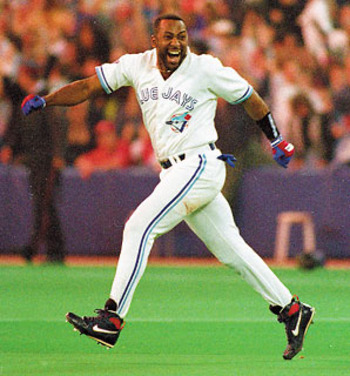
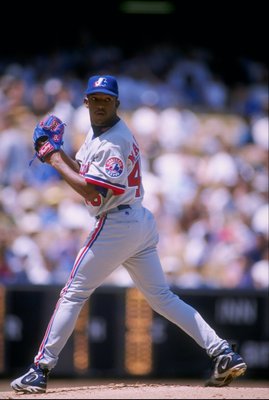



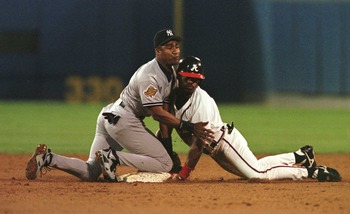



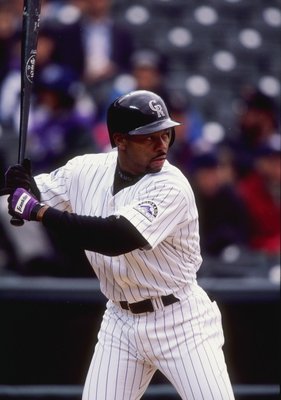


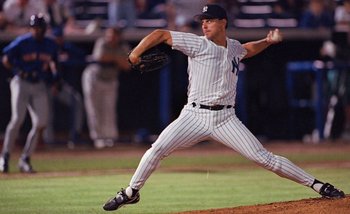
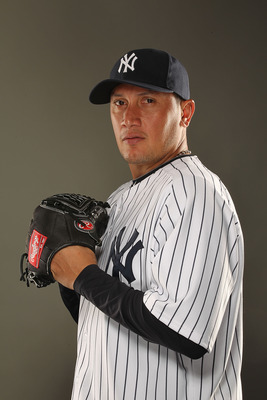
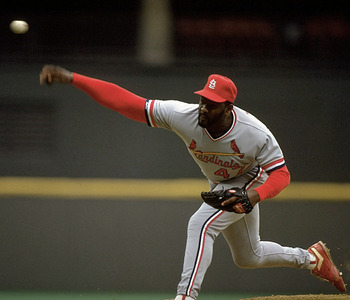

The article brings back a lot of memories. The strike of 1994 was on my anniversary (8/12). I still contend that MLB wanted the strike because the Rangers were going to win the west with a losing record.
ReplyDeleteI've always been a Tigers fan. When they switched to the AL central my rivalries went from the Yanks and Orioles to the White Sox and Twins. I used to hate the Yanks. Now the hate isn't as bad because of the different divisions.
TJD
Thanks for continuing to read and comment. The three division format changed a lot of rivalries. The Royals-A's, Phillies-Pirates, Dodgers-Reds and Giants-Braves were all great rivalries that were split up because of the new divisions. I didn't liike it at first. Yet, without it we wouldn't have the Cardinals-Reds, Braves-Phillies or the White Sox-Tigers rivalries that have become more intense as the years have gone on.
DeleteThe 90s are so fuzzy. I remember the Sosa-McGwire race was big, and everything else I'm not sure if I remember living through or remember because I've seen it in retrospectives. Kenny Lofton is the only player on your list that I remember, but it's mostly because we saw him play in 2006.
ReplyDeleteThe strike was one of the most embarassing things that has ever happened in the game. I don't think steroids even comes close to being as big a black mark on the sport. A big part of the blame should fall on Donald Fehr, the players union representative, who coincidently is no the player representative for the NHL players, who may miss an entire season because of a strike.
Deletewow, mike... that opening paragraph was interesting, moving and very well written. possibly the best piece ive read on here. keep up the great work.
ReplyDeleteThanks for the positive feed back. I hope you continue to enjoy the articles. If you have any suggestions for more articles or topics please feel free to email me or leave another comment.
Deleteseeing that pic of joe carter celebrating while running the bases got me thinking: in your opinion whats the ugliest and best looking uniforms of the past? the font on those old blue jay jerseys is pretty bad. i can remember old baseball cards with the pirates yellow and black "stove pipe" hats! wow... ugly. how about the old astros? all that orange yellow blue and brown? i also seem to recall some ugly sd padres uniforms...
Deletejth
I may be in the minority but I liked those old Jays uniforms. There were some ugly 1980's uniforms. don't worry I plan to do some blogs about the best and worst uniforms in history.
Delete